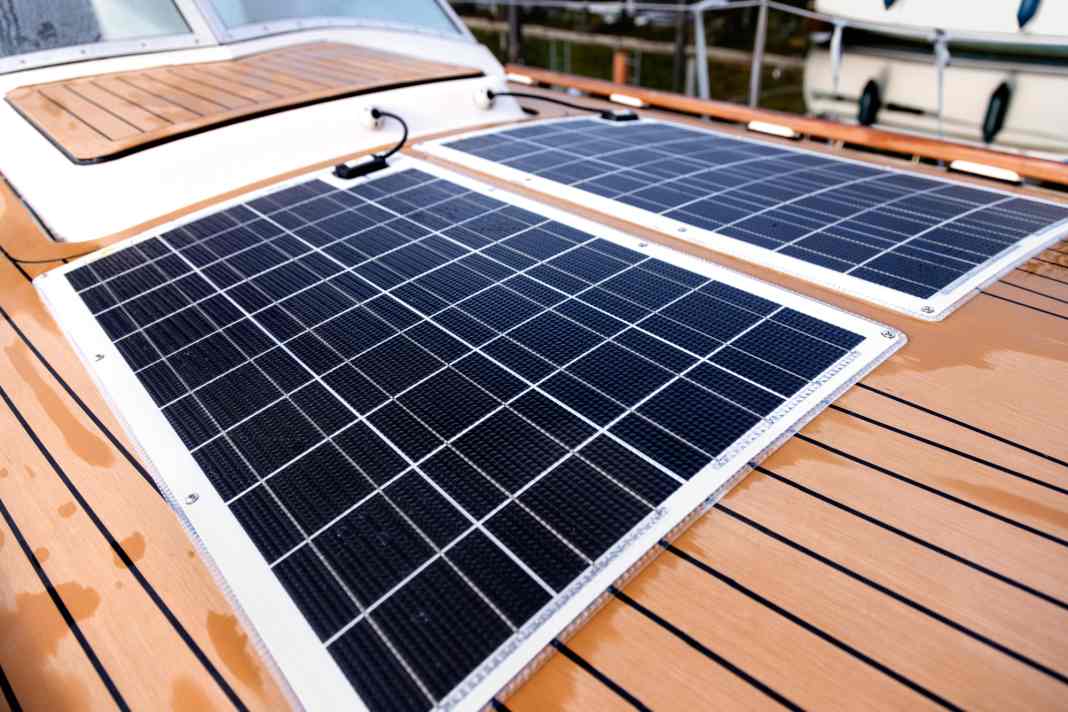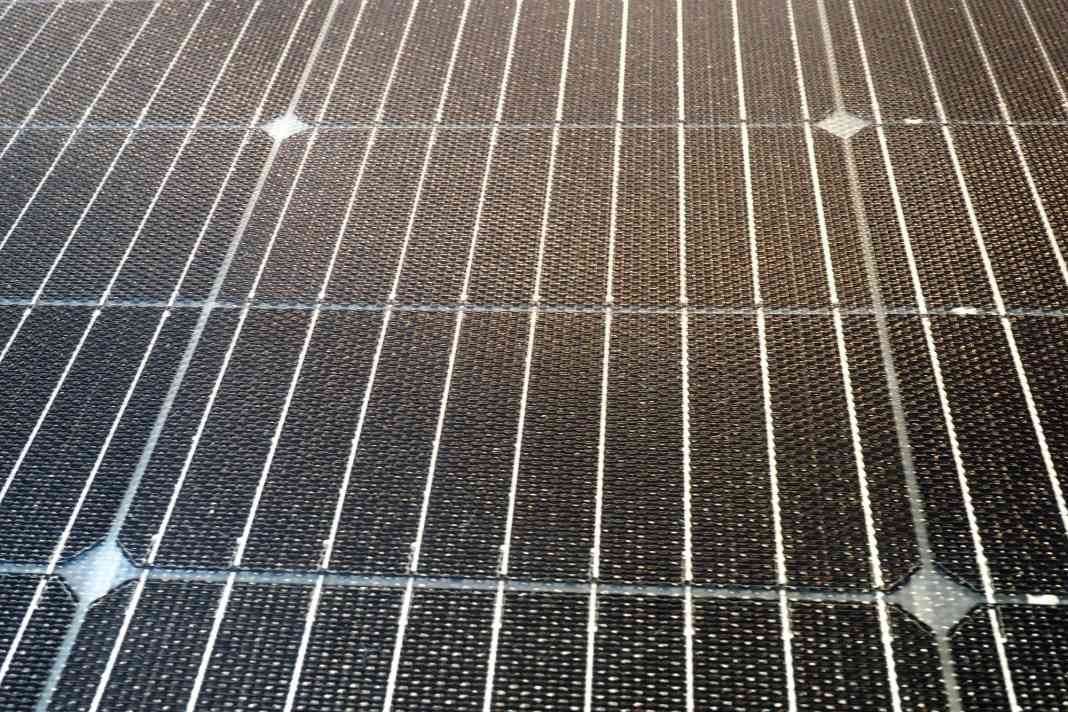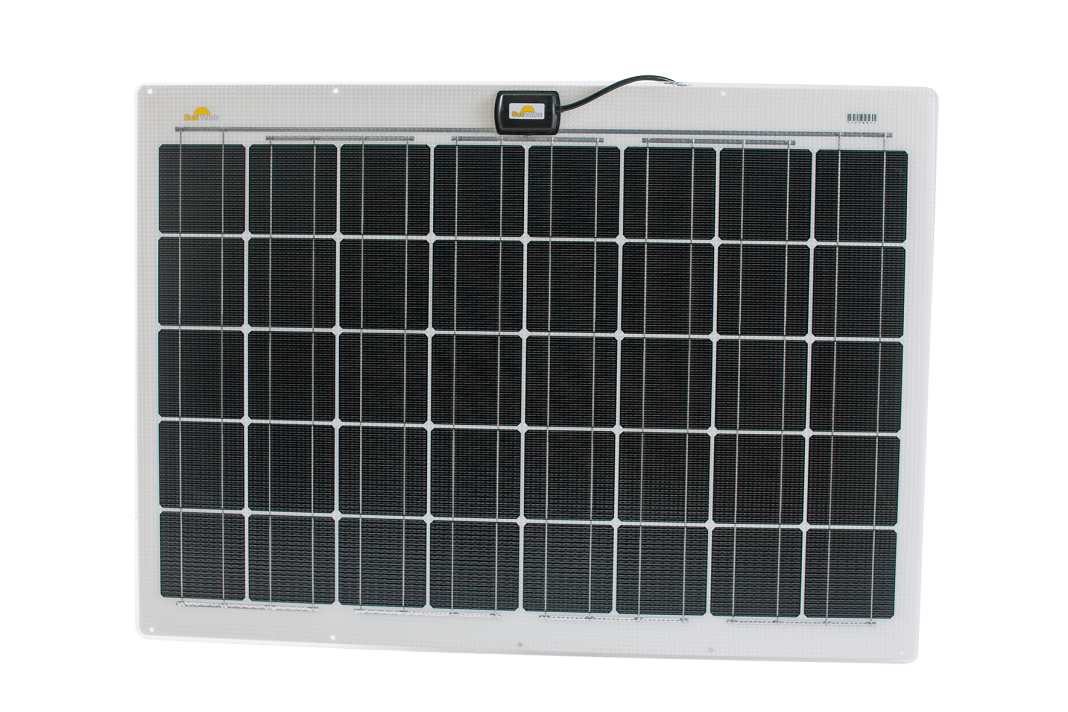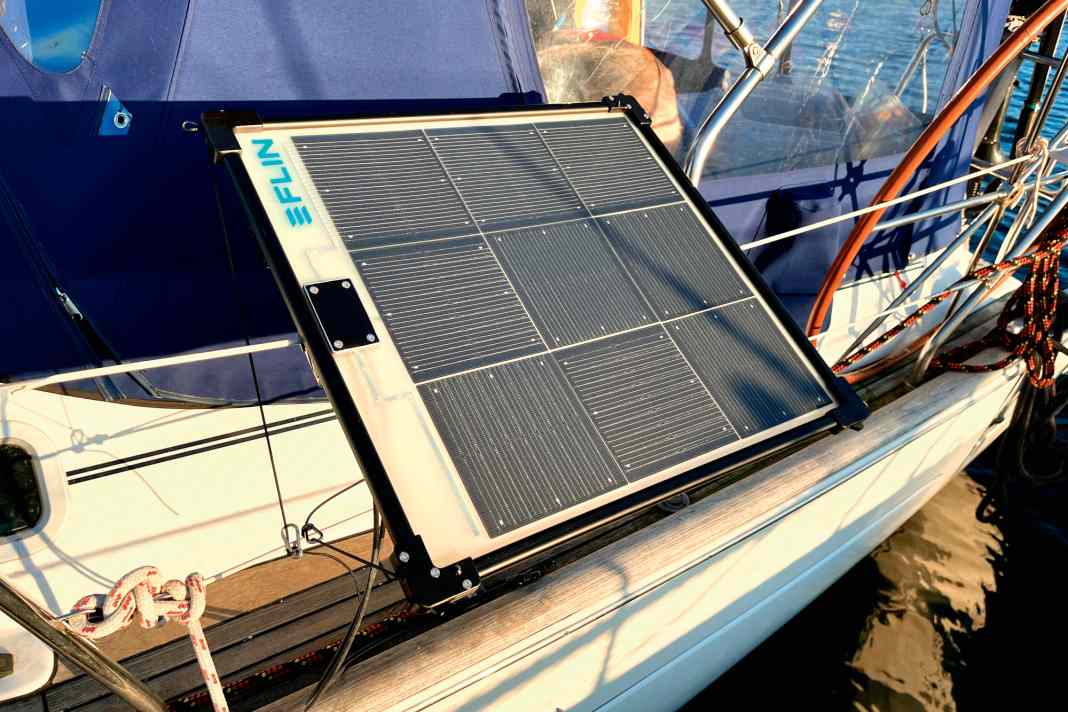


Whether as a small power plant on the balcony at home, with several kilowatts of power on the roof of a house or as a solar park the size of a hectare next to the motorway: on land, photovoltaics is a building block in the replacement of fossil fuels and is becoming more and more popular. At the same time, many owners have a growing desire for longer self-sufficiency, i.e. independence from shore power or diesel generators. With energy-saving LED technology and large lithium batteries that can be charged effectively, the conditions for this have improved significantly in recent years.
However, sailors are also demanding more comfort. Instruments with large colour displays, powerful autopilots, radar systems, inverters and a wide range of multimedia equipment are just as much a part of everyday life on board as refrigerators or even freezers and the 230-volt coffee machine. Overall, the energy requirements of yachts are therefore increasing rather than decreasing. Additional charging sources are therefore in demand. Photovoltaics are very popular here. "We are experiencing enormous demand," attests Arne Gründel from Ferropilot. The electronics specialist sells modules from the Swedish manufacturer Sunbeam System.
Read the other articles in the solar technology series:
On land, the wide distribution is causing prices to tumble. A 400-watt glass module costs around 100 euros including shipping. Complete balcony power plants with 1,000 watts of solar power and a 600-watt inverter are available ready to plug in for as little as 450 euros. This corresponds to 45 cents to 2.5 euros per watt. For use on board, however, the inexpensive glass modules can only be used on an equipment rack at best. They are heavy, fragile, cannot be walked on and usually have very sharp-edged aluminium frames.
Different solar modules for on-board use
Only semi-flexible modules are suitable for on-board use. Although they consist of the same cells, they still cost between 2.7 and 11.0 euros per watt. This is partly due to the elimination of VAT for domestic systems and partly due to the different quantities.
The fixed glass modules are only available in a few sizes and are produced fully automatically. In the case of semi-flexible modules, on the other hand, each manufacturer cooks its own soup in terms of format, layout and cell assembly, which reduces the number of units and increases production costs.
At first glance, it is hard to tell the difference between a 50-euro module and a branded model that costs ten times as much. In fact, the basic structure of the modules is roughly the same. The cells are almost exclusively monocrystalline silicon cells, which are embedded in a sandwich made of several layers of polymer plastic. But that's where the similarities end. How exactly the sandwich is constructed has a major influence on the service life of the modules. A particularly high degree of flexibility is not necessarily the best solution. This is because the approximately 0.16 millimetre thick silicon cells are fragile and react extremely sensitively to point loads and kinks.
If the module structure is too soft, the cells can be damaged during handling during installation. The mobile use of soft modules is also problematic. The more often the module is moved, the more likely it is that the cells will break or there will be problems with the contacting. The modules from brand manufacturers are therefore generally stiffer.
The German manufacturer Sunware goes one step further. An additional carrier plate made of aluminium sandwich reduces the risk of cell breakage and also compensates for the unavoidable temperature differences in the module, thereby increasing the service life of the cells.
Sun has a strong influence on efficiency
Speaking of temperature: solar modules heat up considerably in the sun, so that temperatures of 70 degrees and more are often reached in summer. This reduces efficiency, but also causes mechanical problems: the silicon cells have very low thermal expansion, in contrast to the plastic sandwich that surrounds them. As a result, the module works hard, and length changes of several millimetres are the order of the day. The problem areas are the electrical connections of the cells, which are literally folded and stretched as a result and often break. The fewer reinforcements the module has and the thicker the connectors, the greater the risk.
Modules with so-called multi-busbar technology have an advantage, as the individual connectors are thinner and more flexible. There is also a certain degree of redundancy, so if a cell connector breaks, the entire module does not immediately fail.
However, a lot also depends on the workmanship, as Lasse Hochfeld from Flin-Solar in Kiel confirms: "We had some problems with premature loss of power due to micro-cracks and contact problems with our first module series, even though they were manufactured in Europe. We therefore changed suppliers and switched to multi-busbar connectors. The current modules are much more robust."
Advantages and disadvantages of solar modules
A word about the cells. High-priced modules are often fitted with Sunpower models. With up to 24 per cent efficiency, the cells are often regarded as the ultimate. In practice, however, Sunpower also produces different versions. "The top versions are so expensive that they are actually only used for special applications such as racing," says Julian Schürer, founder and Managing Director of Sunware.
According to him, the normal versions have an efficiency of around 22 per cent, which is hardly any different to conventional cells. Nevertheless, the Sunpower cell has advantages; the comparatively solid copper backing makes it mechanically more stable and also better able to withstand temperature fluctuations.
"One disadvantage is that it cannot be cut, so only modules with whole cells are possible. With conventional cells, we can cut the size individually. That's why we don't use Sunpower cells for standard modules," says Schürer.
Overall, the market currently offers a wide range of on-board options. They range from the simple solar bag for mobile use to the practical railing module or a sprayhood fitted with solar cells, right through to customised power suppliers that are integrated into the shape of the deck.
Connection technology



Designs





Installation variants for solar modules






With their non-slip surface, semi-flexible modules are easy to install on deck - provided you have a sufficiently large and reasonably flat surface available. The simplest option is to screw them in place. A little more effort is required for gluing. Self-adhesive versions are ideal, as the adhesive coating has the right properties for the module and therefore also absorbs thermal expansion. Permanently elastic sealing compounds sometimes leave the module too little freedom of movement, and it is hardly possible to apply them without air pockets. When the module heats up in the sun, the air expands. Cell fractures occur more frequently on such hills. Sprayhoods and bimini can be a good alternative.
Many suppliers have suitable modules in their programme. Mechanically robust models such as the carbon-reinforced versions from Sunbeam System or the TX or SX series from Sunware are recommended. Mobile solutions are ideal for occasional recharging at the anchorage. The big advantage here is that the modules can be aligned so that they provide maximum power and no shade falls on them. So-called solar bags, which are often offered with a charge controller, are particularly space-saving. However, the usual cabling of the bags is anything but seaworthy and hardly weatherproof. Folding modules designed for use on board are much more robust. Hanging solutions are Flin-Solar's speciality. With its Sail and Kite models, the manufacturer offers modules that can be pulled into the rig. This allows comparatively large module surfaces to be realised. The Flin-Rail, which is designed for the railing, is clever and can be easily clipped onto the railing and orientated towards the sun.

